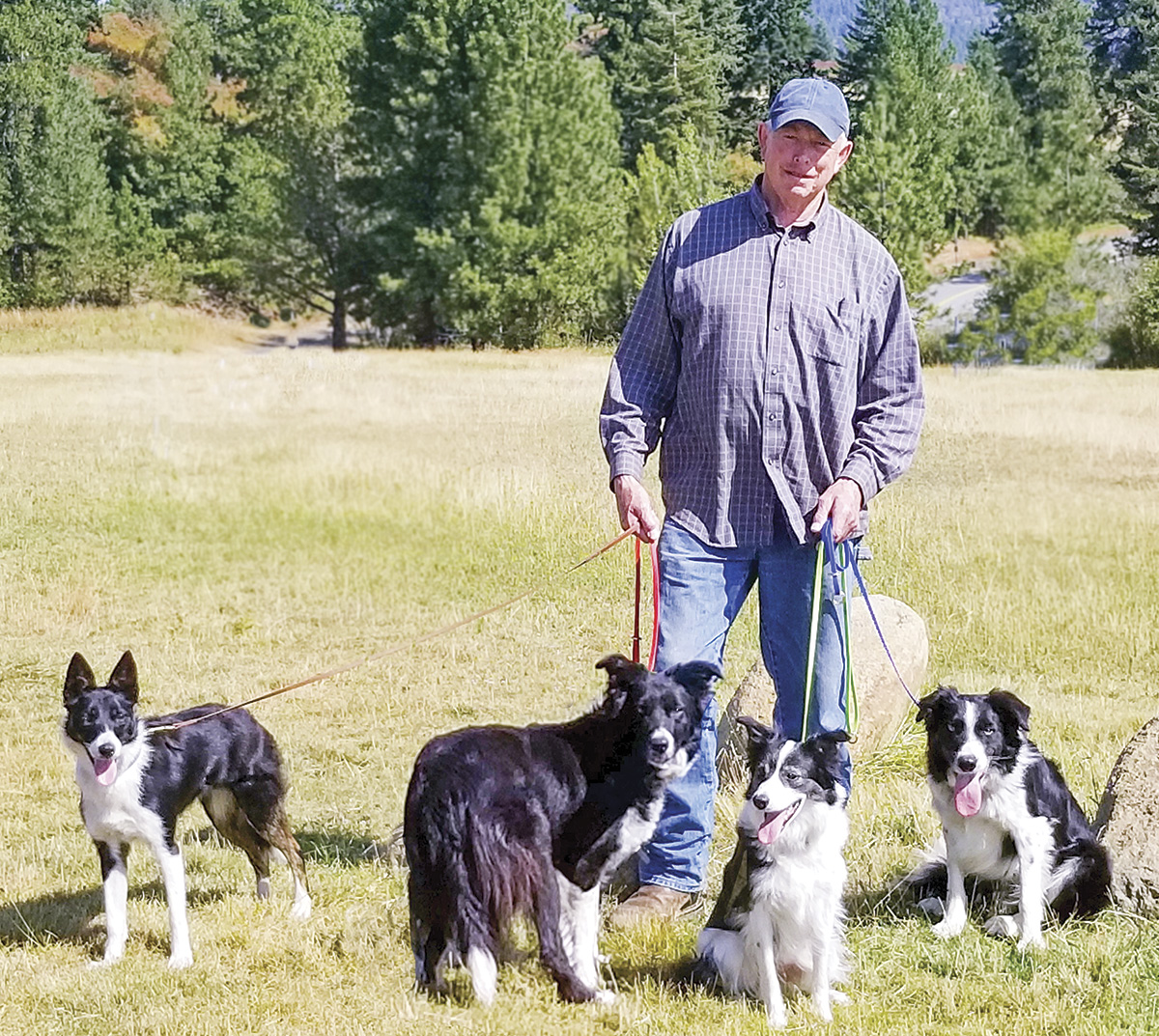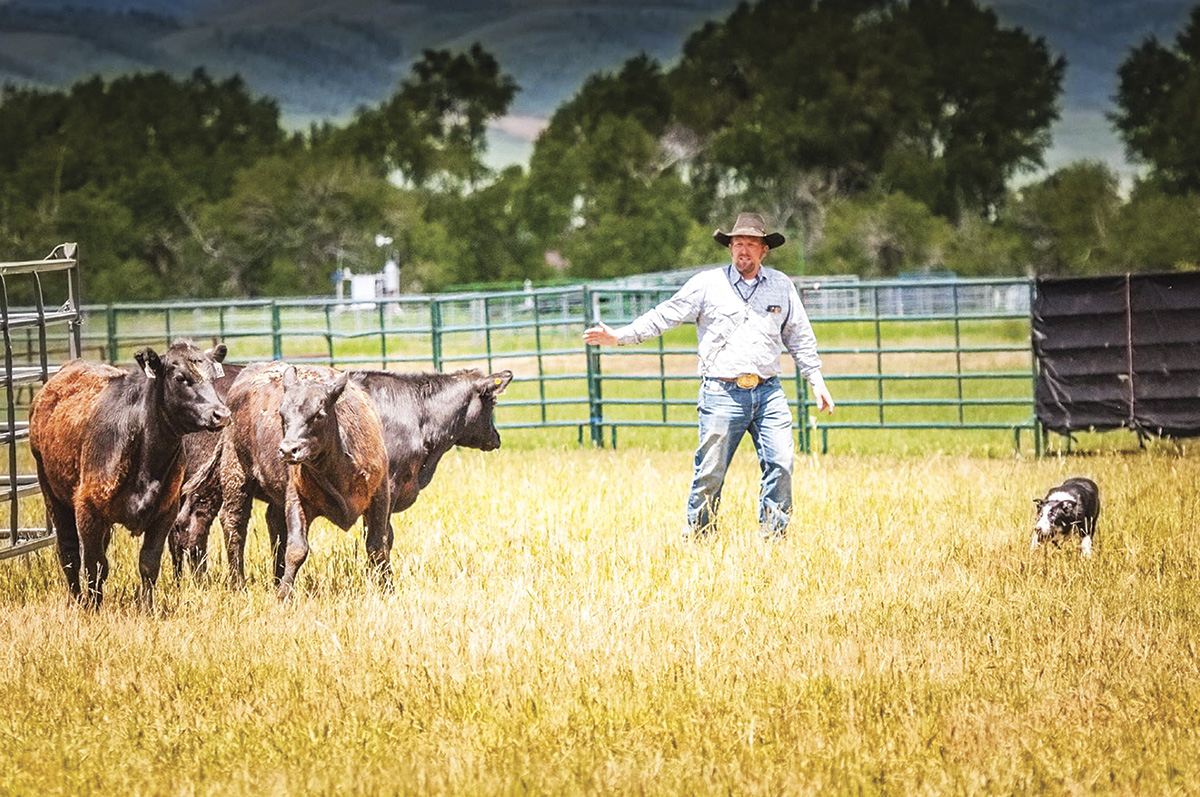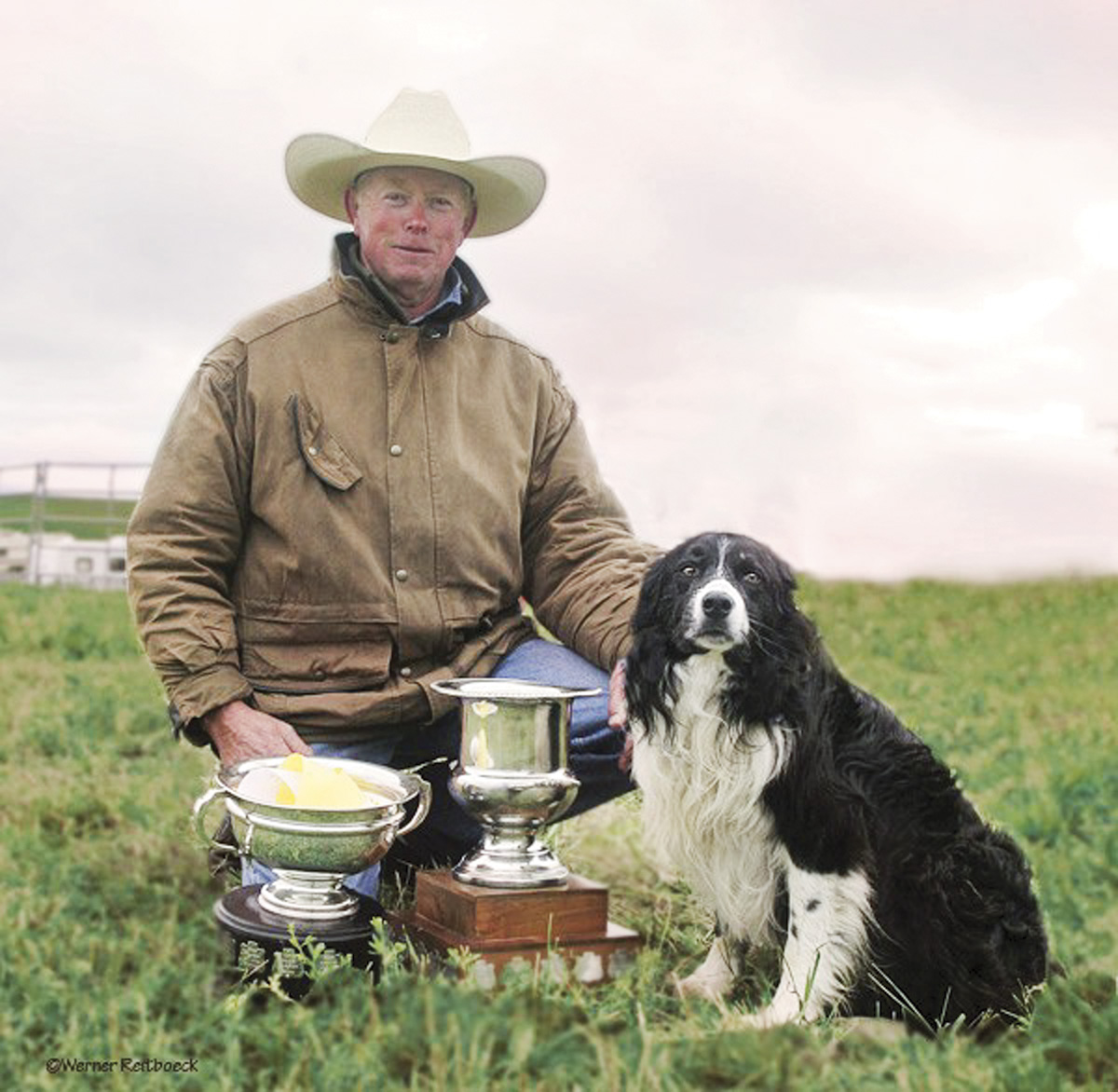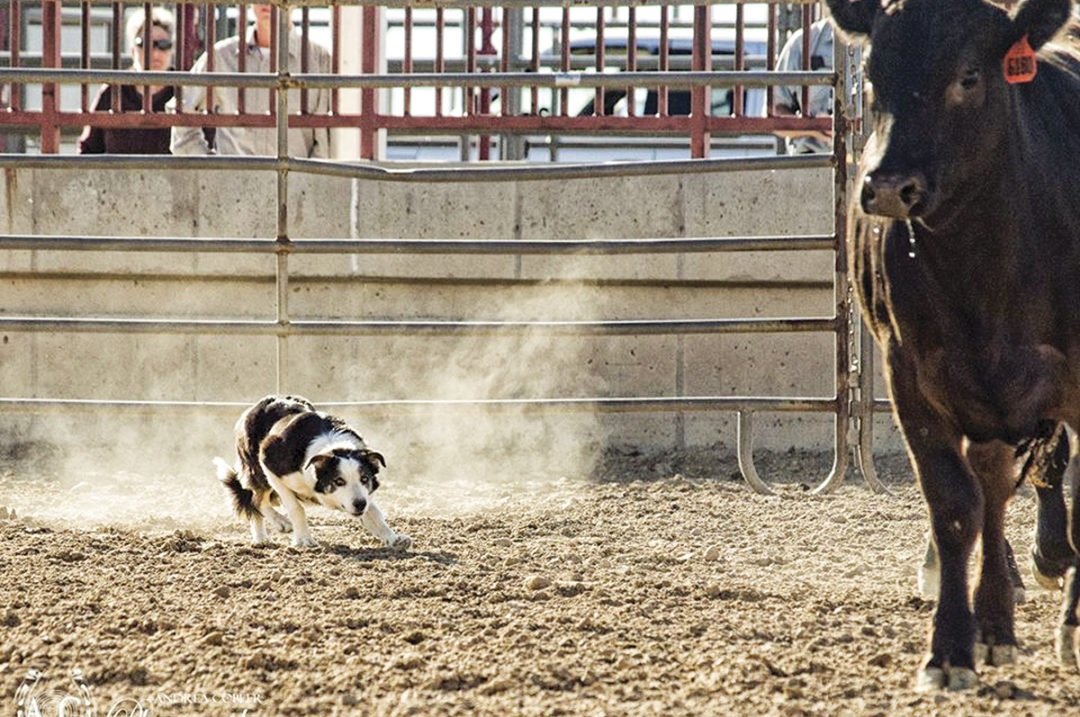Cowboy humorist Baxter Black once quipped, “Working dogs is like manipulating a screwdriver with chopsticks, like doing calligraphy with a plastic whip, like bobbing for apples, like threading a needle with no hands, like playing pool on the kitchen table.”
Intimidated? Maybe consider a different metaphor from Steven Wight, Mountain States Stockdog Association co-founder and president, border collie breeder and Bancroft rancher: “It’s a big symphony getting it to work.” When the hours of training pay off and the moving pieces come together, working dogs are a beautiful sight.
15 minutes a day
Norman Close of Viola has been around farms and livestock in the UK, Canada and the U.S. most of his life. He has been training stock dogs since the 1990s and, like Wight, has proven his skill in trials. Now semiretired from raising, selling and training dogs, he has a lot to say about what makes a good working dog – and handler.
 Norman Close, a self-proclaimed “border collie man,” prepares for a day of training. Photo provided by Vicki Close.
Norman Close, a self-proclaimed “border collie man,” prepares for a day of training. Photo provided by Vicki Close.
Close says consistency is one of the most important factors in training a young dog. “It only takes 15 minutes a day if you have livestock right there. They learn so much in a short time,” he says. Only a rare dog would benefit from longer lessons when young. Rather, they need repetition: A good target is four to five weekly sessions, but some dogs require more.
Wight says most stockmen don’t realize that “10 to 15 minutes a day with a dog would change their lives.” Those minutes add up.
Getting started
“If you want to work a dog and it’s not keen, there’s nothing you can do about it,” Close says. While there’s no way to know for sure how a puppy will turn out, Wight and Close recommend spending some time researching bloodlines and potential health problems. Seeing the parents work is a plus, if possible.
Basic commands form the foundation of a dog’s education – particularly a good “lie down” and recall. “That’s something you need on young pups before you start them,” Close says. That foundation proves helpful once livestock are introduced. The process also teaches the dog to learn and develops its relationship with the trainer.
Close starts a young dog (introducing it to livestock) at 10 to 12 months. A pup allowed to roam free and “meet” stock on its own before then will often form bad habits, he says. “It’s great to keep your pup with you, but if you don’t have time to look after it properly, it may be better to put it up rather than letting it do its own thing.”
 Steven Wight and “Levi” move cattle in a stock dog trial. Photo by Brian Biesemeier.
Steven Wight and “Levi” move cattle in a stock dog trial. Photo by Brian Biesemeier. Wight also discourages introducing young dogs to big stock before they’re ready, even in company with trained dogs. “Would you wanna take your 8-year-old son who’s looking for guidance and let him run with a bunch of 18-year-olds?” he asks.
Both men start dogs in a small pen with a few calm animals. Wight uses cattle, and Close prefers sheep. Close focuses first on getting the dog to move around the animals. He often attaches a long line that the pup drags behind. This makes catching an exuberant dog easier and allows control if need be.
Then it’s time to hone the dog’s natural instincts. “If my dog gets on the back side, I move back and let him bring the sheep or cattle to me,” Close says. “Don’t just stand there and expect them to work out.”
Wight gradually increases pen size before moving to an arena, a 4- to 5-acre pasture, a larger pasture and so on. He maintains firm boundaries, gains the dog’s respect and prioritizes the training process. “When the wreck happens – because it will happen – I let the cattle go, go get the dog, make him listen and let the adrenaline go down,” he says. “I can regroup the cattle later.”
Of course, a producer may bypass all of this by purchasing a “finished” dog, but it won’t be cheap. A trainer invests time, not just in the purchased animal but also in weeding out the non-starters. And, adds Wight, “when you get a good finished dog, it’s tough to let them go.”
Pressure and release
Stockmen understand that working with animals is about applying and releasing pressure. The principles are the same with dogs, although it looks a little different. “The dog’s reward isn’t getting a biscuit or something,” says Wight. “It’s getting to work. They want to please you.”
Creating too much pressure and releasing it too slowly are common mistakes. “If your voice is a consistent growl and you’re never releasing pressure, it becomes a battle,” Close says. “The poor old dog never understands when things are going ok.”
Wight says part of the secret is teaching a dog stockmanship of a sort. “If your dog’s out of control, your cattle won’t trust the dog,” he says. “You have to create a bond of trust between cattle and dog.”
Wight, along with his wife and children, put stockmanship into practice on the Mill Iron S Ranch. The cattle know the dogs, and Wight regularly moves 500 to 600 head of cattle with just two dogs. They don’t need extra riders or much noise.
Favorite breeds and helpful leads
 Norman Close and “CV Joe” won the Canadian National Finals and Western Canadian Finals 2005. Photo provided by Vicki Close.
Norman Close and “CV Joe” won the Canadian National Finals and Western Canadian Finals 2005. Photo provided by Vicki Close.
After decades of working with, breeding and raising dogs, Wight and Close both prefer border collies. “They’re not Kennel Club dogs,” Close says. “They’re bred for working.” Their toughness, stamina, smarts, adaptability and keenness make them all-around excellent dogs for both pasture and trial work.
Even so, other handlers gravitate toward different breeds based on their needs and preferences. Some may find a heeler’s style more intuitive, while others may need dogs that will hunt stock out of brush.
Differences notwithstanding, producers new to the stock dog world will find it a welcoming place. “Find someone willing to help you,” Wight advises. Whether that means attending a clinic, calling a friend or dropping in at the Mill Iron S for some tips, he says the working dog community is full of folks who would be happy to help someone who wants to learn.





.jpg?height=auto&t=1713304395&width=285)


